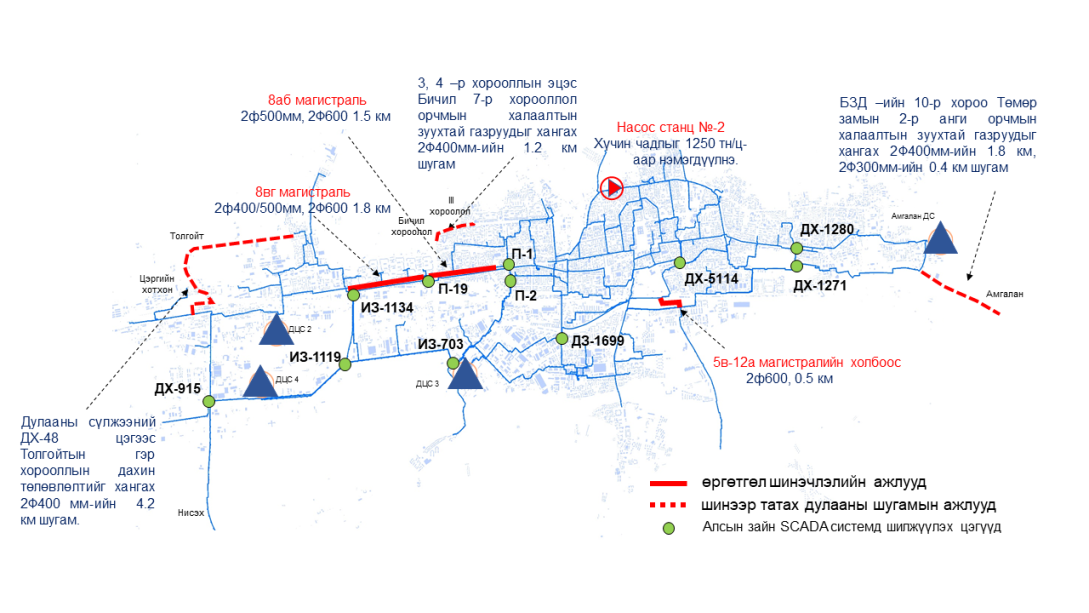"Ulaanbaatar District Heating Project" improves the reliability and the management capacity of the district heating network.

With the new district heating pipeline now operational, 150-200 of additional residential 12 story buildings can be connected to the centralized heating network, providing reliable heat to 15 000 number of households, offices and companies. This increase in capacity will allow the district heating network to continue expanding, meeting the growing demand from Ulaanbaatar’s redevelopment areas and reducing the city’s air pollution.
Today, Ina Marciulionyte, Ambassador of the European Union to Mongolia, and Hannes Takacs, Head of the EBRD’s Office in Mongolia visited the project site along with the Mongolian beneficiary institutions’ representatives from the Ministry of Energy and Ulaanbaatar District Heating SOE to assess the progress first-hand.
The project is a tangible investment of the European Union, Austrian government and EBRD in the energy sector in Mongolia. It introduces innovative technologies and infrastructure improvements across several key areas including modernization of district heating pipelines; upgrades to the pressure-boosting pump stations; extension of centralized heat supply to new development areas, capacity building and research for renewable energy opportunities in the heating network.
In 2022, the project upgraded 3.3 km of district heating pair of pipelines in Songinokhairkhan district and increased the capacity of Pump Station, which supplies heating to Ikh Toiruu, benefitting thousands of residents in Chingeltei, Khan-Uul, Bayanzurkh and Khan-Uul districts.
Looking ahead, the project will further support UB City’s efforts to complete heating network expansions in the Tolgoit redevelopment area, introduce smart meters, and provide Corporate Development programme. This project, funded by the EU, Austria and EBRD, represents the first major foreign investment in Ulaanbaatar’s centralized heating system in over two decades.
By expanding the centralized heating network, the project enables the connection of residential areas, social buildings, and low- to medium-power heating facilities to the central heating system, reducing the need for individual stoves and furnaces. This shift supports cleaner air and reduces pollution while introducing advanced technologies that improve energy efficiency across the city.
A key impact of the project has been the modernization and renewal of the aging central heating lines, which had become unreliable due to frequent faults and operational delays. By replacing these deteriorated lines, the project has enhanced the reliability and efficiency of the heat supply system, significantly boosting its operational capacity.
